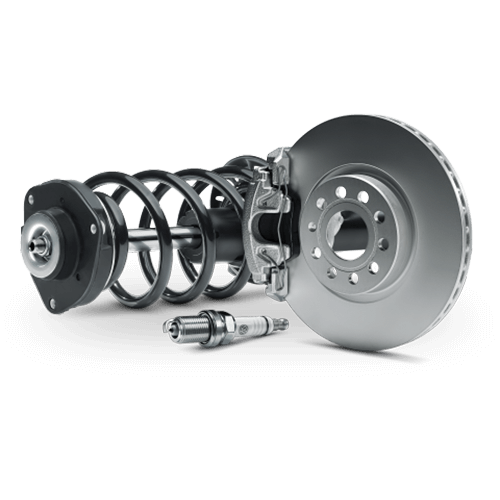
ABS Sensor: What It Is, Why It Matters, and When You Need a Replacement
Anti-lock Braking System (ABS) sensors are crucial for maintaining your vehicle’s safety and performance, particularly in adverse driving conditions. These sensors, strategically placed on each wheel, monitor wheel speeds and relay this information to the ABS control unit. This continuous monitoring ensures optimal braking performance and helps you maintain control of your vehicle. For high-quality ABS sensors and parts, visit Best Parts, and explore our ABS Speed Sensor Collection for affordable options and free shipping.

How ABS Sensors Work
ABS sensors are strategically placed on your vehicle's wheels. They continuously monitor the speed of each wheel, sending this information to the ABS control unit. This data is critical for the ABS system to function properly. Here's how it works:
- When you brake hard: The ABS system compares the speed of each wheel. If one wheel starts to lock up (lose traction), the ABS control unit will quickly modulate the brake pressure to that specific wheel, preventing it from locking completely.
- This modulation process: Helps maintain your steering control, allowing you to avoid skidding or losing control of your vehicle, even on slippery surfaces.
Think of ABS sensors as the eyes of your braking system. They're constantly watching the wheels, ensuring they don't lock up and that you maintain control.
Signs Your ABS Sensor Needs Replacing
Like any part of your car, ABS sensors can wear out over time or get damaged. If you notice any of the following signs, it's time to have your ABS sensor inspected:
- ABS warning light on the dashboard: This is the most obvious sign. The ABS warning light illuminates when the system detects a fault, often indicating a problem with a sensor.
- ABS system not working: If you brake hard and feel the wheels locking up, or if you notice a lack of braking response when you expect it, your ABS system may not be functioning properly.
- Clicking or grinding noises: These noises, especially when braking, could indicate a faulty sensor or a problem with the sensor's wiring.
- Erratic speedometer readings: Sometimes, a faulty ABS sensor can interfere with the vehicle's speed sensor, leading to inaccurate speedometer readings.
Why You Should Replace a Faulty ABS Sensor
Ignoring a faulty ABS sensor is not only dangerous but could also lead to further complications. Here's why it's crucial to get it fixed:
- Compromised safety: A faulty ABS sensor can significantly reduce the effectiveness of your ABS system, putting you at a greater risk of skidding or losing control during emergency braking.
- Costly repairs: If a faulty sensor isn't addressed, it can damage other components of the ABS system, leading to more expensive repairs down the line.
- Failing emissions test: In some areas, a faulty ABS system can result in failing an emissions test, making your vehicle ineligible for registration.
How Long Does an ABS Sensor Last?
The lifespan of an ABS sensor varies depending on factors such as driving conditions, road quality, and maintenance. On average, they can last anywhere from 5 to 10 years or even longer. However, it's essential to have your sensors inspected regularly, especially if you notice any warning signs.
Cost of ABS Sensor Replacement
The cost of replacing an ABS sensor can vary depending on the make and model of your car, the complexity of the replacement process, and labor costs. Generally, you can expect to pay anywhere from $100 to $500 for the sensor and labor. You can find your ABS sensor at Bestparts.ca for cheap and free shipping.
How to Replace an ABS Sensor
Replacing an ABS sensor is a relatively straightforward process, but it requires some mechanical knowledge and the right tools. Here’s a general outline of the steps involved:
- Safety First: Ensure the vehicle is on a flat surface and the ignition is off. Secure the vehicle with wheel chocks and use a jack to lift the wheel if necessary.
- Locate the Sensor: Find the ABS sensor, typically located near the brake rotor or wheel hub.
- Disconnect the Sensor: Carefully disconnect the electrical connector from the sensor.
- Remove the Old Sensor: Depending on the vehicle, you may need to remove bolts or screws holding the sensor in place. Gently remove the sensor from its housing.
- Install the New Sensor: Place the new sensor in the same position and secure it with bolts or screws. Reconnect the electrical connector.
- Test the System: After installation, start the vehicle and ensure the ABS warning light is off. Test drive the vehicle to ensure the ABS is functioning correctly.
Conclusion
ABS sensors are integral to your vehicle’s safety, ensuring optimal braking performance and control. Regular monitoring and prompt replacement of faulty sensors are crucial for maintaining the effectiveness of your ABS system. For high-quality ABS sensors and parts, visit Best Parts, where you can explore our ABS Speed Sensor Collection and find affordable options with free shipping.
By keeping a close watch on your ABS sensors and addressing issues promptly, you’ll ensure that your vehicle remains safe and reliable on the road.























































